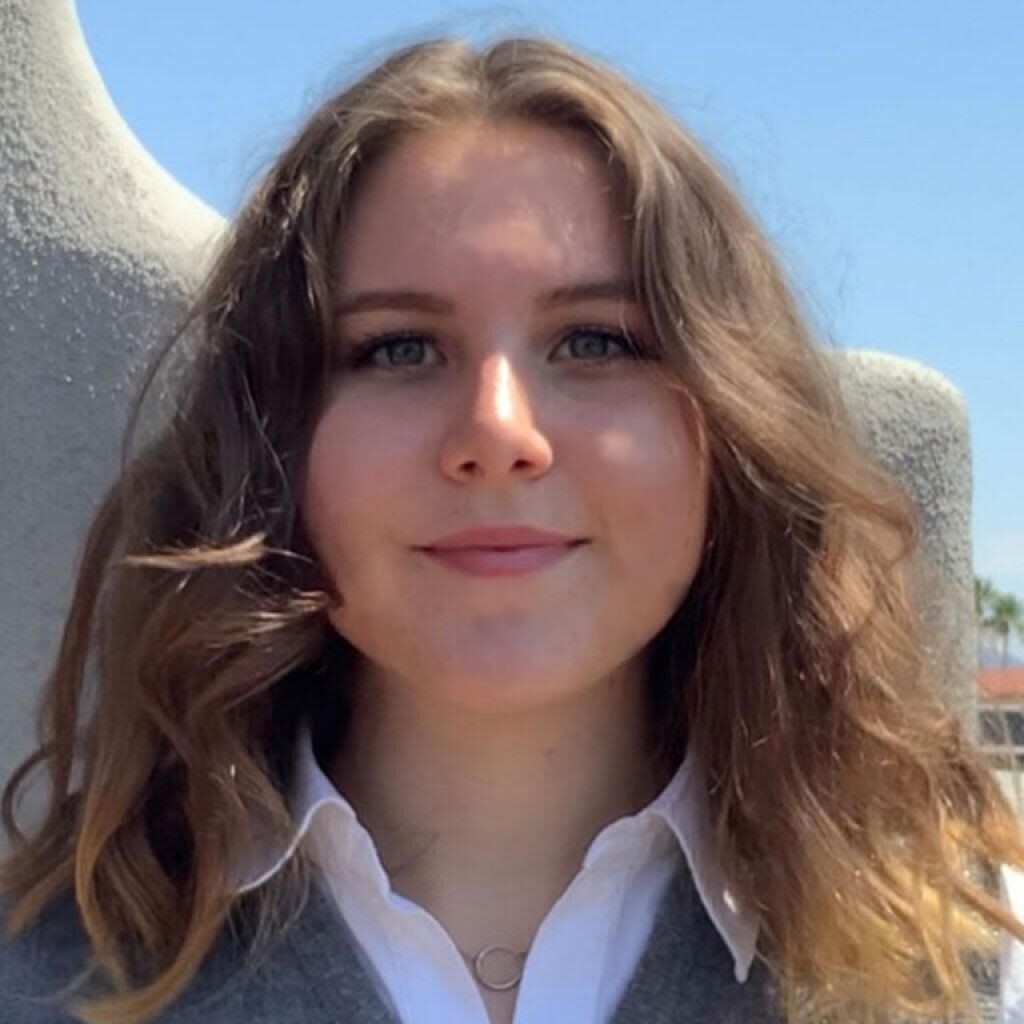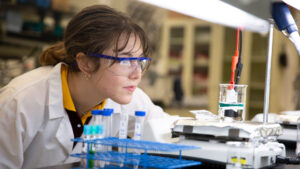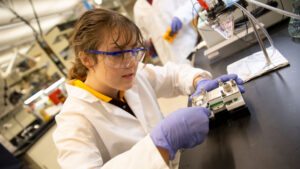Annika Wines
Environmental engineering
Hometown: Mesa, Arizona, United States
Graduation date: Fall 2021

FURI | Fall 2021
Electrocatalytic Reduction of Nitrate via Nickel Foam Modified with Copper-Cobalt Nanoparticles for Ammonia Selectivity
The standard Haber-Bosch process to produce ammonia (NH3) for use in agriculture applications is both energy and resource-intensive. This research advances a cost-effective alternative to ammonia production using catalytic activity tuned for ammonia production from nitrate reduction via three-dimensional nano-enabled electrodes. The combined electroactivity of copper and cobalt nanoparticles onto an affordable electrode medium (nickel foam) attained high nitrate removal efficiency of >85% and high ammonia selectivity in relevant laboratory conditions. These encouraging outcomes emphasize the potential of bimetallic electrodes to treat contaminated water sources with nitrate, while allowing a sustainable decentralized ammonia recovery as added value product.
Mentor: Sergi Garcia Segura
Featured project | Fall 2021
Annika Wines is an environmental engineering senior conducting sustainable ammonia production with Assistant Professor Sergi Garcia Segura. She is passionate about solving difficult challenges in sustainability and the built environment, which she is accomplishing through her FURI project.
What made you want to get involved in FURI?
I met my mentor as a student in one of his classes and was interested in the research he was doing. I began as a volunteer in his lab and applied for FURI the next semester.
How will your engineering research project impact the world?
Our engineering project will support sustainability goals while improving access to safe drinking water. Nitrate removal is energy-intensive and often requires chemical treatment, causing waste. The Haber-Bosch process currently contributes 1.4% of global greenhouse emissions to produce ammonia for fertilizer. The goal of this project is to create an alternative to the Haber-Bosch process while removing harmful levels of nitrate from potable water sources in an affordable, accessible way. We are doing so through electrodeposition of common earth metals onto an affordable nickel medium. This project seeks to serve communities all over the world, especially isolated and rural communities where problems of water quality and inaccessibility of technology persist.
What has been your most memorable experience as a student researcher?
The most memorable moment in my research was when my mentor, graduate student Gabriel Carron Calle and I saw desired levels of ammonia yield too high for our equipment to detect. It was very exciting for us because it is everything we have been working for in the past semester.


